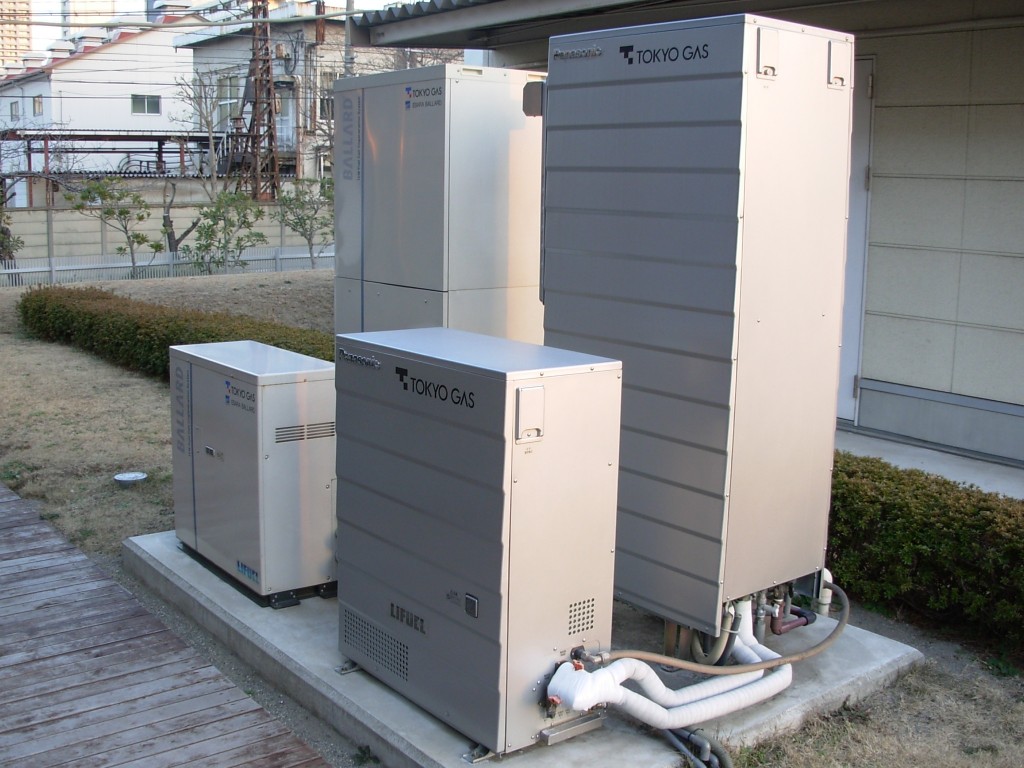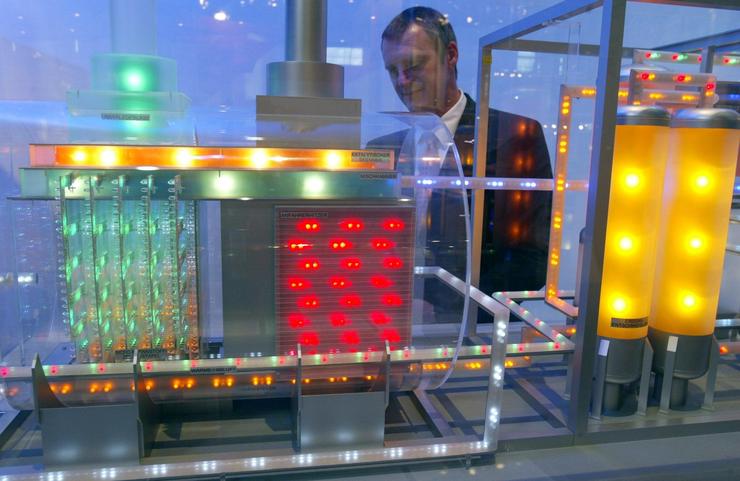The Ene-Farm fuel cell is the first ever commercial fuel cell system in the world. So far, the cell units have only available to people who dwell in a detached property. However, it seems that the creators of the fuel cell unit, Panasonic and Tokyo Gas, have been working hard to get the Ene Farm in to apartment blocks.

The action of the cell unit remains the same as its predecessors. Hydrogen is taken from the city gas supply
and used to react with the oxygen in the surrounding atmosphere. This reaction gives off heat which in turn generates electricity while heating water. The one cell unit has the triple benefit of providing an energy source, backup power source and hot water unit all in the same place. However, the latest version of the Ene-Farm fuel cell unit has been tweaked so that the cell units can be placed in the pipe shaft of an apartment block.
Firstly, the Ene-Farm cell unit exterior panels are thicker on the latest model. In addition to this, the exhaust structure has been altered to make the unit sturdier in strong winds and stronger legs mean that the unit can withstand earthquakes a little easier. The result is an airtight unit that can be stored in an open pipe shaft on any floor of an apartment building that will still work in strong winds.

Following their success in Japan, Panasonic is planning on expanding its Fuel Cell Systems to Europe under the Ene-Farm project.
The new Ene-Farm should be introduced to the public April 1, 2014. Tokyo Gas is hoping that the reduction (approximately 37%) of primary energy consumption and (approximately 49%) reduction of CO2 emissions will encourage condo owners to help them achieve their goal of selling 500 units in one year. The total annual savings that could benefit people using the units is somewhere between 30,000 and 40,000 Yen (305 – 420 USD). So far, certain real estate developers have already shown interest in the Ene-Farm fuel cell unit saying that they would be happy to use the cell units in their future development which will contain 456 units over two properties.

The action of the cell unit remains the same as its predecessors. Hydrogen is taken from the city gas supply
and used to react with the oxygen in the surrounding atmosphere. This reaction gives off heat which in turn generates electricity while heating water. The one cell unit has the triple benefit of providing an energy source, backup power source and hot water unit all in the same place. However, the latest version of the Ene-Farm fuel cell unit has been tweaked so that the cell units can be placed in the pipe shaft of an apartment block.
Firstly, the Ene-Farm cell unit exterior panels are thicker on the latest model. In addition to this, the exhaust structure has been altered to make the unit sturdier in strong winds and stronger legs mean that the unit can withstand earthquakes a little easier. The result is an airtight unit that can be stored in an open pipe shaft on any floor of an apartment building that will still work in strong winds.

Following their success in Japan, Panasonic is planning on expanding its Fuel Cell Systems to Europe under the Ene-Farm project.
The new Ene-Farm should be introduced to the public April 1, 2014. Tokyo Gas is hoping that the reduction (approximately 37%) of primary energy consumption and (approximately 49%) reduction of CO2 emissions will encourage condo owners to help them achieve their goal of selling 500 units in one year. The total annual savings that could benefit people using the units is somewhere between 30,000 and 40,000 Yen (305 – 420 USD). So far, certain real estate developers have already shown interest in the Ene-Farm fuel cell unit saying that they would be happy to use the cell units in their future development which will contain 456 units over two properties.

0 comments:
Post a Comment